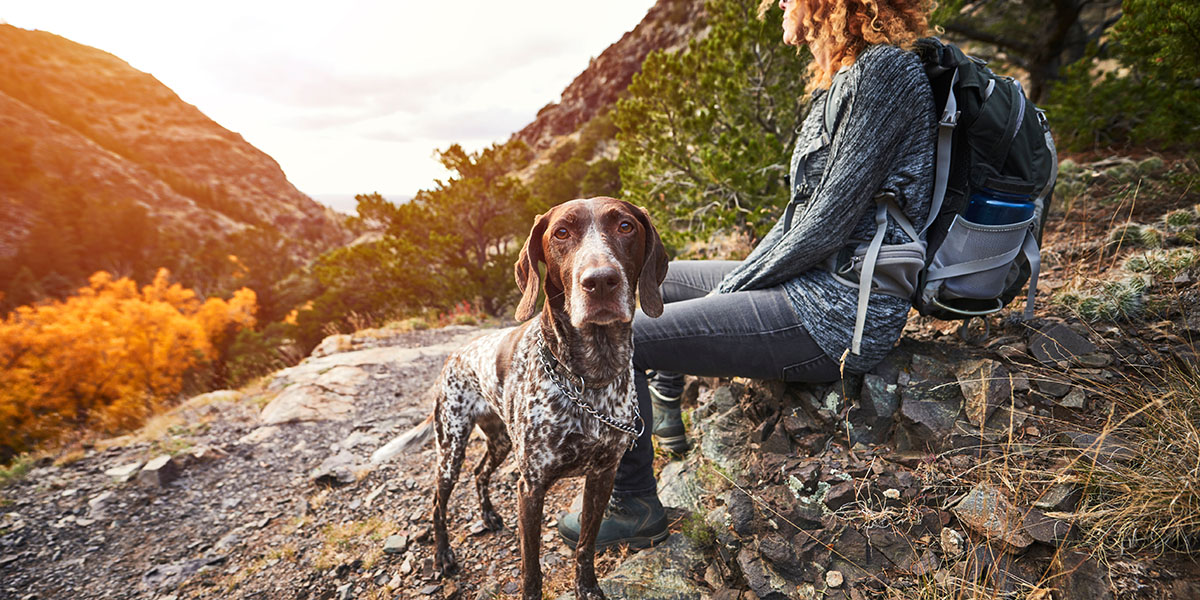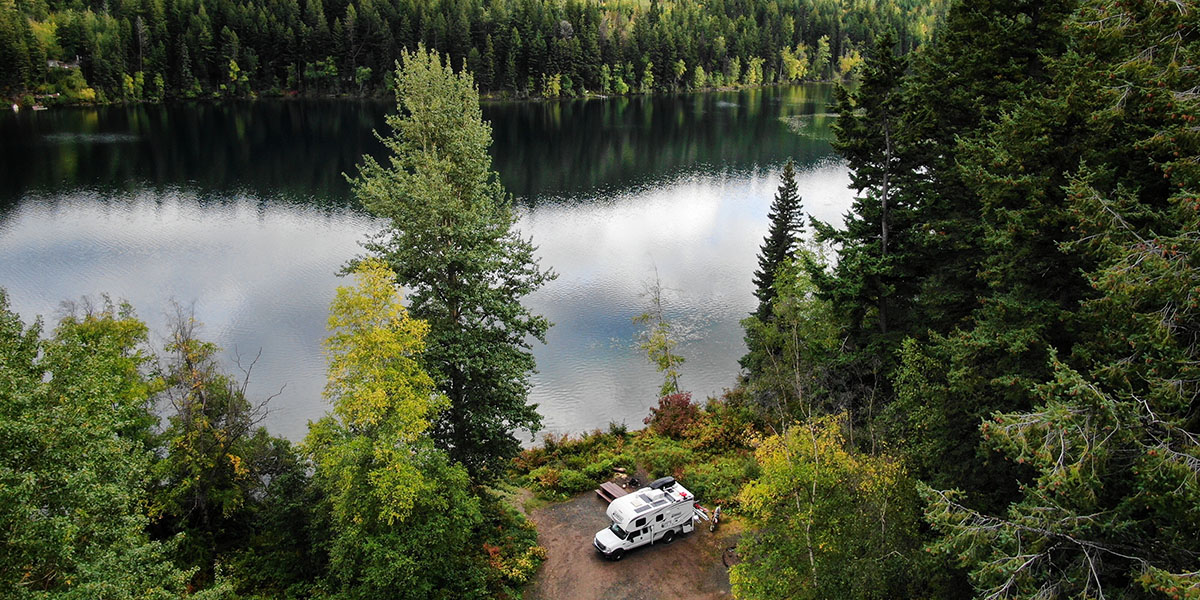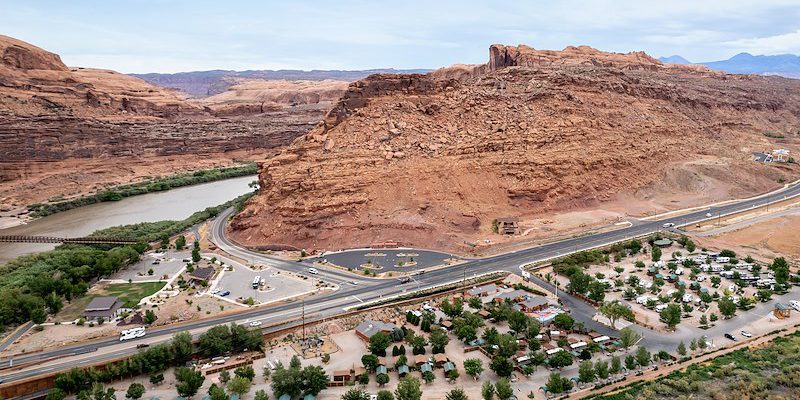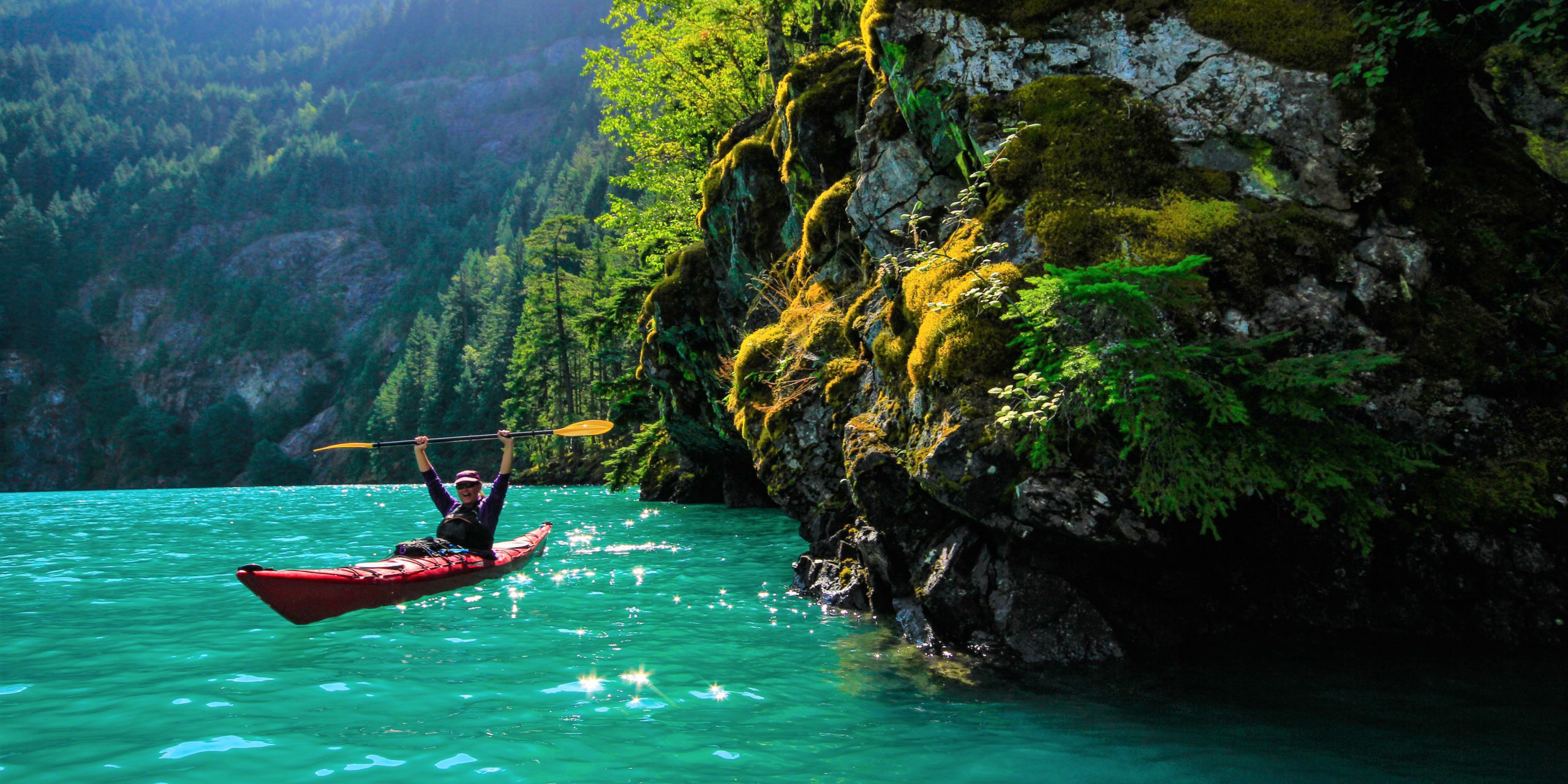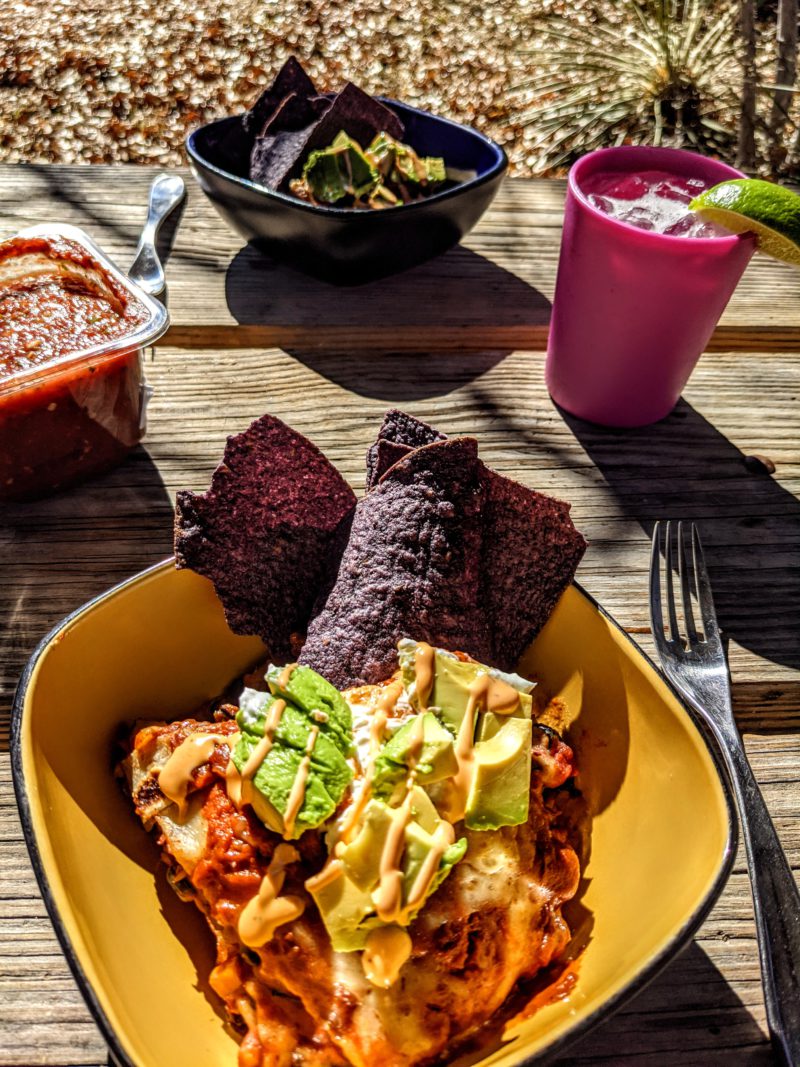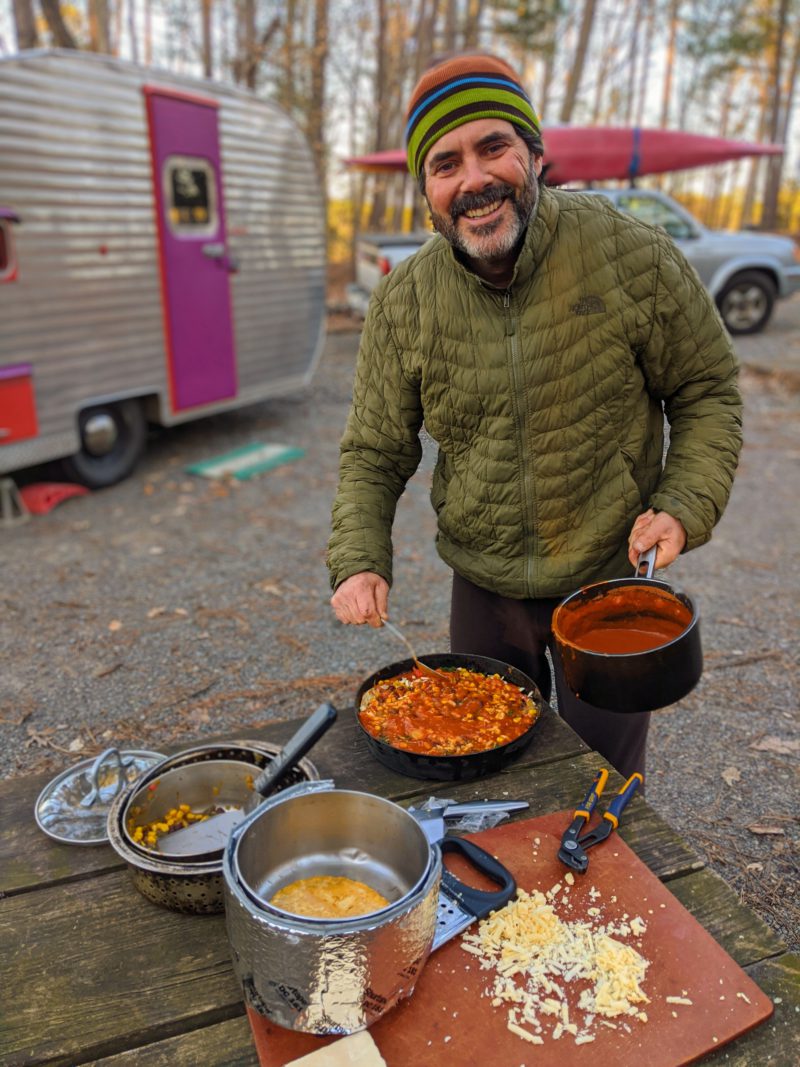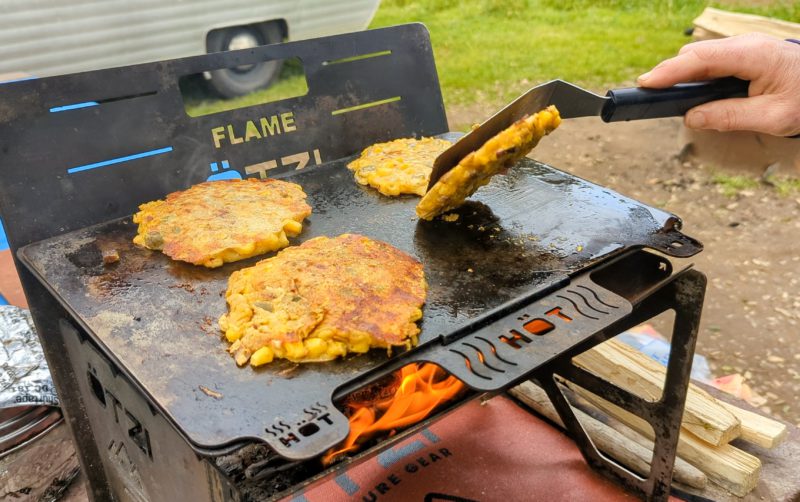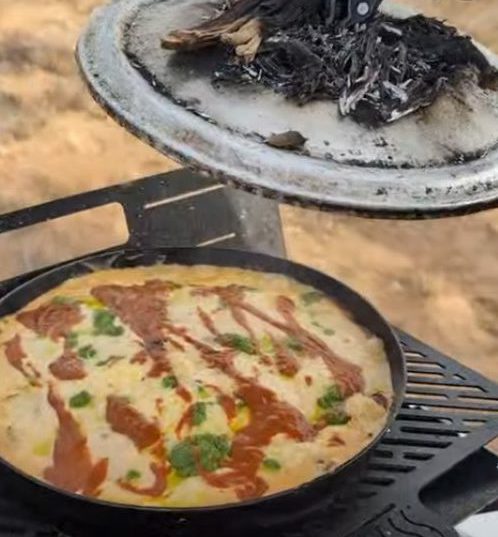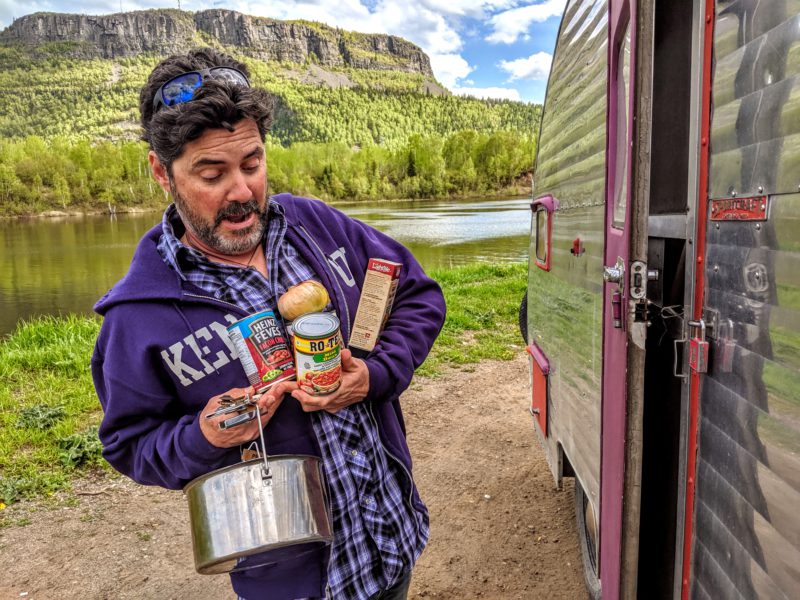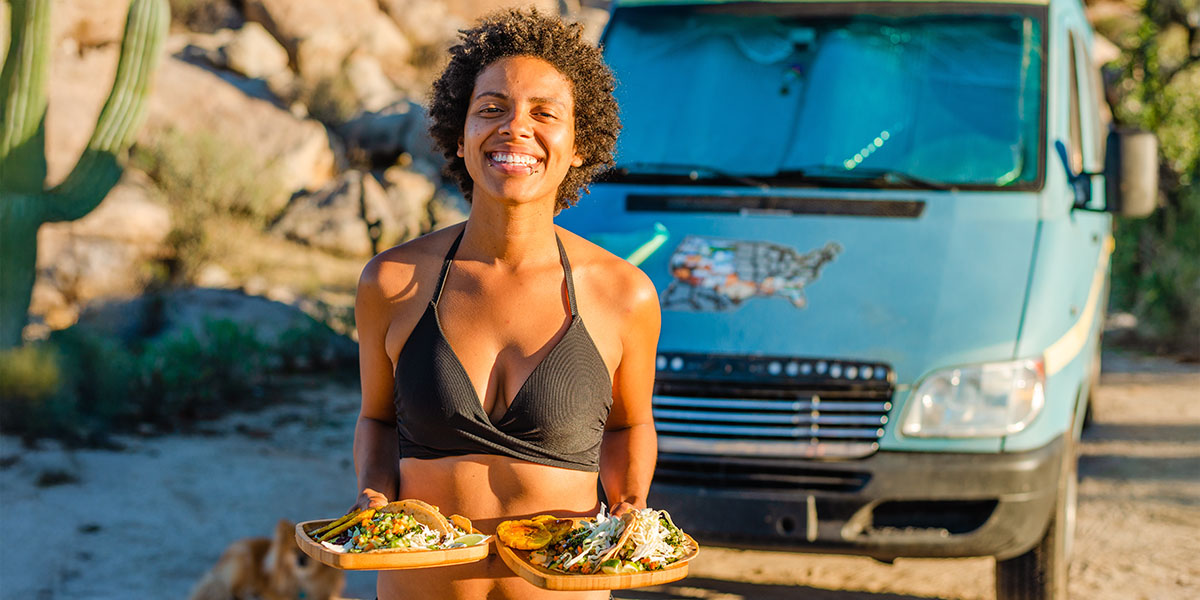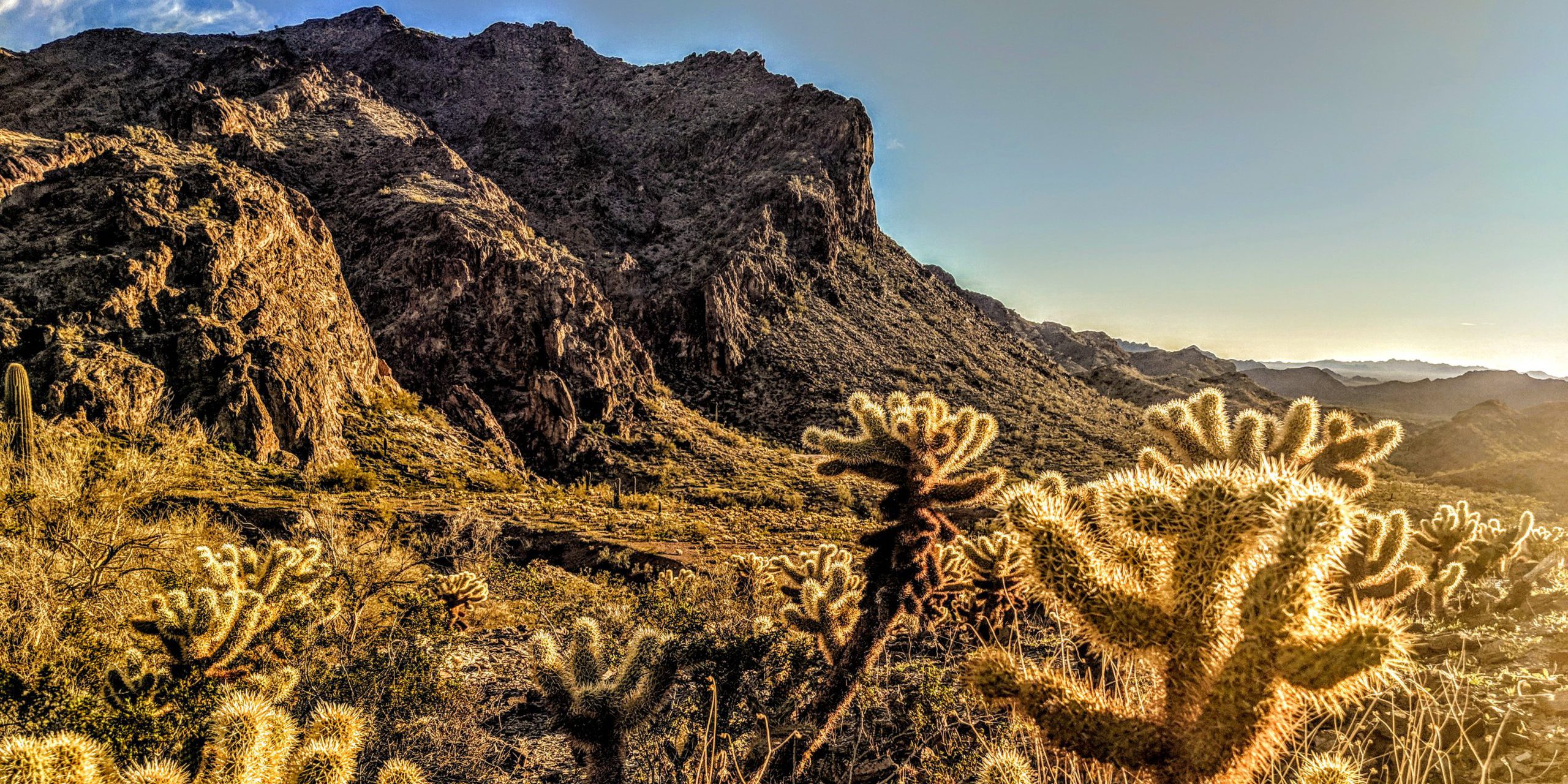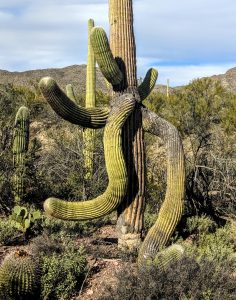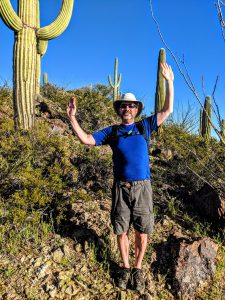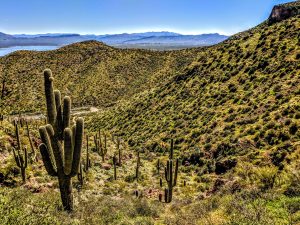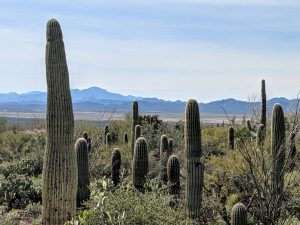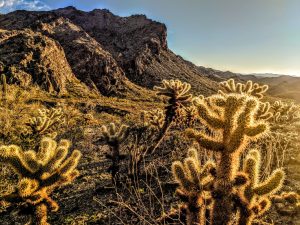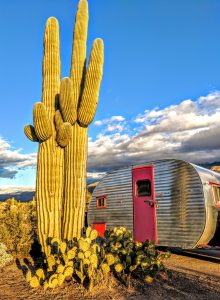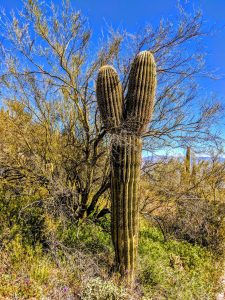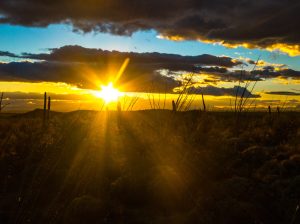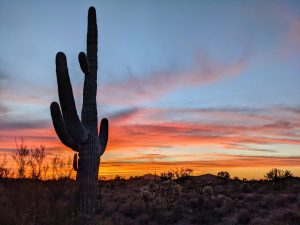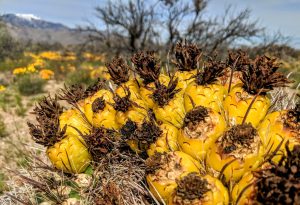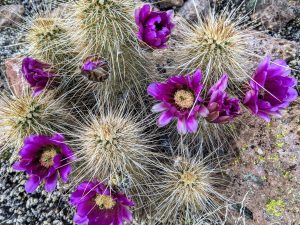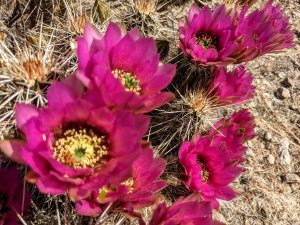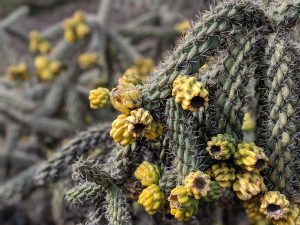Sharing adventures and memories with your family, even the four-legged variety, is the best. Personally, some of our favorite memories on the road have involved hikes with our pups, Wilson and Journey. We’ve watched random sunsets at canyon overlooks. We’ve sat under forest canopies after steep climbs. Hiking with dogs adds a whole new level of joy (and sometimes chaos) to the experience. But it also comes with responsibility — especially when it comes to trail etiquette.
As RVers and full-time travelers, we’ve taken our dogs on hikes in dozens of states, through national forests, desert landscapes, alpine meadows, and even city trails. And along the way, we’ve learned that hiking with dogs isn’t just about bringing water and leashes. It’s also about respecting the land, other hikers, and our pets’ limits.
So, whether you’re new to hiking with dogs or just looking for a quick refresher, here’s our go-to guide for hitting the trail with your four-legged kiddos — while keeping things respectful, safe, and fun for everyone.
Rule 1. Know before you go.
First things first — not all trails are pet-friendly. Also, even dog-friendly parks and trails usually specific rules in place for a reason.
Before heading out:
- Check trail regulations. Many national parks don’t allow dogs on hiking trails, while others are more relaxed. (National forests and BLM land tend to be more pet-friendly.) Always verify online or with a ranger station prior to arriving at the park.
- Know the leash laws. Many trails require dogs to be on a leash no longer than six feet. Others allow off-leash with voice control. But unless your dog has near-perfect recall, we recommend sticking to the leash.
- Look up trail difficulty and terrain. Steep drop-offs, rocky scrambles, or hot desert stretches might be unsafe or uncomfortable for your pet.
Pro Tip: Apps like AllTrails and Paw Parks often note if a trail is dog-friendly and what the terrain is like. We also use Instagram to preview what we’re getting into.
Rule 2. Leash up and bring proper gear.
Even if your dog is well-behaved off-leash, there’s a good chance you’ll encounter others who aren’t comfortable around dogs — or wildlife that could provoke a chase. That’s why we always have our pups on leash, assess the situation, and keep the leash handy if we ever let our dogs off in approved areas.
Some of our must-have hiking gear for pups:
- A strong leash and harness. We prefer harnesses that don’t restrict shoulder movement. Journey’s got power, and Wilson … well, he’s more of a vibe walker who wants to mark everything.
- Collapsible water bowl and extra water. Don’t rely on creeks or puddles, especially during dry seasons. Bring those pups
- Pet-safe hiking shoes. Sure, this is optional and specifically for rough, hot, or icy trails. Our pups don’t like doggy boots, so they don’t make it on some hikes that other dogs do. But they are great if you are going into hikes that will be rough on their paws.
- Doggy pack. This is for longer hikes. If your pup is fit and trained, they can carry their own water or waste bags.
- ID tags and GPS tracker. Just in case. Better to have it and not need it than to need it and not have it.
- Muzzle for reactive dogs. Journey is great with people but very reactive to other dogs. So, we try not to take her on hikes we know will likely have high pet traffic. But when she does come with us, we always have a pet-friendly muzzle that doesn’t bother her, as it adds a layer of safety for all parties.
Rule 3. Pack in, pack out — especially you know what.
This one’s simple: Pick up after your dog. Always. Leaving dog poop on the trail is one of the biggest etiquette violations we see out there — and it can have serious environmental impacts.
Even in the backcountry or on wilderness trails, pet waste can alter soil chemistry and affect wildlife behavior. It’s not “natural” just because it came from an animal, because your pet isn’t from the area.
So, what do we do?
- Carry extra bags. Bring more than you think you’ll need.
- Double-bag and stash it. Take an odor-proof pouch to store it until you get to a trash can.
No, it’s not glamorous — but neither is stepping in it.
Rule 4. Be aware of other hikers.
Not everyone loves dogs, and not every dog loves everyone. When hiking with pets, you’re not just responsible for your dog’s safety — you’re responsible for others’ comfort and experience too.
Here’s what we always try to practice:
- Yield right-of-way. Step off the trail and let others pass, especially on narrow or steep paths.
- Leash up when you see others. Especially families with kids, other dogs, or hikers with gear.
- Don’t assume off-leash is OK. Just because others are doing it (and trust me, they will) doesn’t mean you should.
One of our biggest pet peeves (pun intended) is seeing pets off leash in areas that are designated leash areas. This is a safety rule for a reason.
Rule 5. Respect wildlife and the trail.
We’re all out there to enjoy the outdoors — and that includes the animals who actually live there. Dogs are natural chasers, barkers, and scent explorers, but it’s our job to keep them from harassing wildlife or damaging sensitive habitats.
What we do:
- Keep dogs on trail. This avoids trampling native plants or disturbing nests.
- Avoid hiking at dawn or dusk. This is especially important on areas with heavy wildlife activity. (Also, always check for bear warnings or other wildlife notices.) These times are usually the most active time for local wildlife.
Also, remember that wildlife smells linger. Even if your dog doesn’t see the animal, they’re reacting to scent, which can make them pull or bolt unexpectedly.
Rule 6. Know your dog’s limits.
Not every dog is built for every trail. Wilson, our chill Cairn Terrier, loves moderate walks and shaded trails but isn’t trying to summit anything too intense. Journey, our high-energy Staffy mix, will keep going until we make her stop — but even she’s had her limit on hot or exposed hikes.
Things to consider:
- Watch for overheating. Panting, drooling, or stopping frequently are signs your dog needs a break.
- Paw protection. Hot pavement or jagged rocks can cause injury. Touch the ground with your hand. If it’s too hot for you, it’s too hot for them.
- Hydration and breaks. Stop often, even if your dog isn’t asking for it.
Some of the hardest hikes we’ve done were in the sand dunes — beautiful, but exhausting, and tough on everyone’s legs and paws. That soft-sinking surface is basically like walking uphill forever. Know when to call it.
Rule 7. Leave no trace — together.
As RVers and hikers, we live by the Leave No Trace principles. When hiking with pets, this extends beyond the poop bags and water bowls. It’s about sharing the space responsibly.
Here’s how we apply it with our dogs:
- Stay on designated trails.
- Minimize bark noise, especially in serene areas.
- Keep dogs from digging, chasing, or damaging the natural area.
When in doubt, we ask ourselves: If everyone did what we’re doing right now, would this trail still feel the same a year from now?
Remember: Hiking with Dogs Is a Privilege
We truly believe that hiking with dogs is one of the best ways to experience the outdoors. Watching our pups light up when they’re on the trail, splashing through streams, or sniffing around a quiet forest boondocking spot reminds us why we live this lifestyle. But it’s also a reminder: Not everyone can or wants to hike with dogs, and we all share the trail.
Trail etiquette isn’t about rules for the sake of rules. It’s about preserving the spaces we love so we (and our dogs) can enjoy them again and again.
So, pack that leash, grab the water bowls, and hit the trail the right way. Because when we all do our part, hiking with pets becomes more than just a walk in the woods — it becomes a shared adventure that makes every mile a memory worth wagging about.
